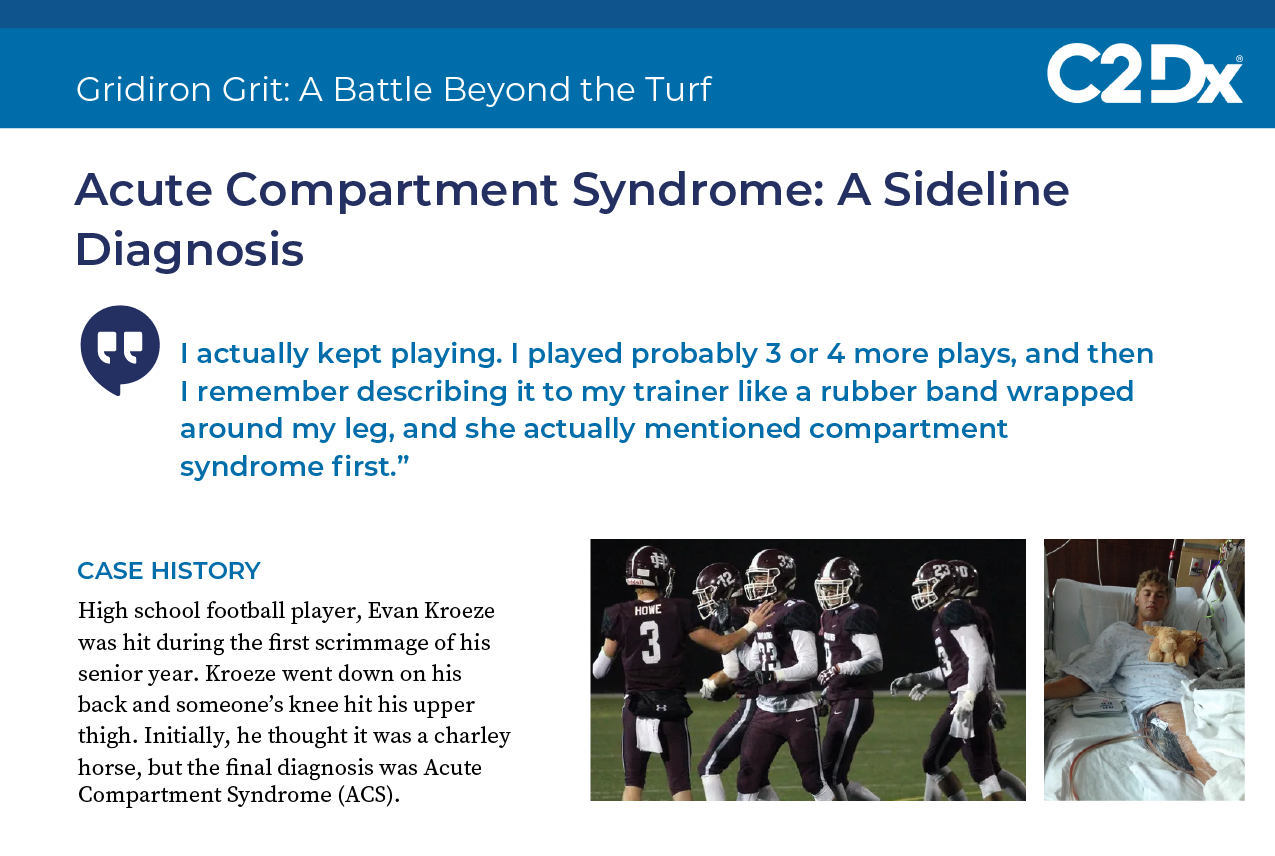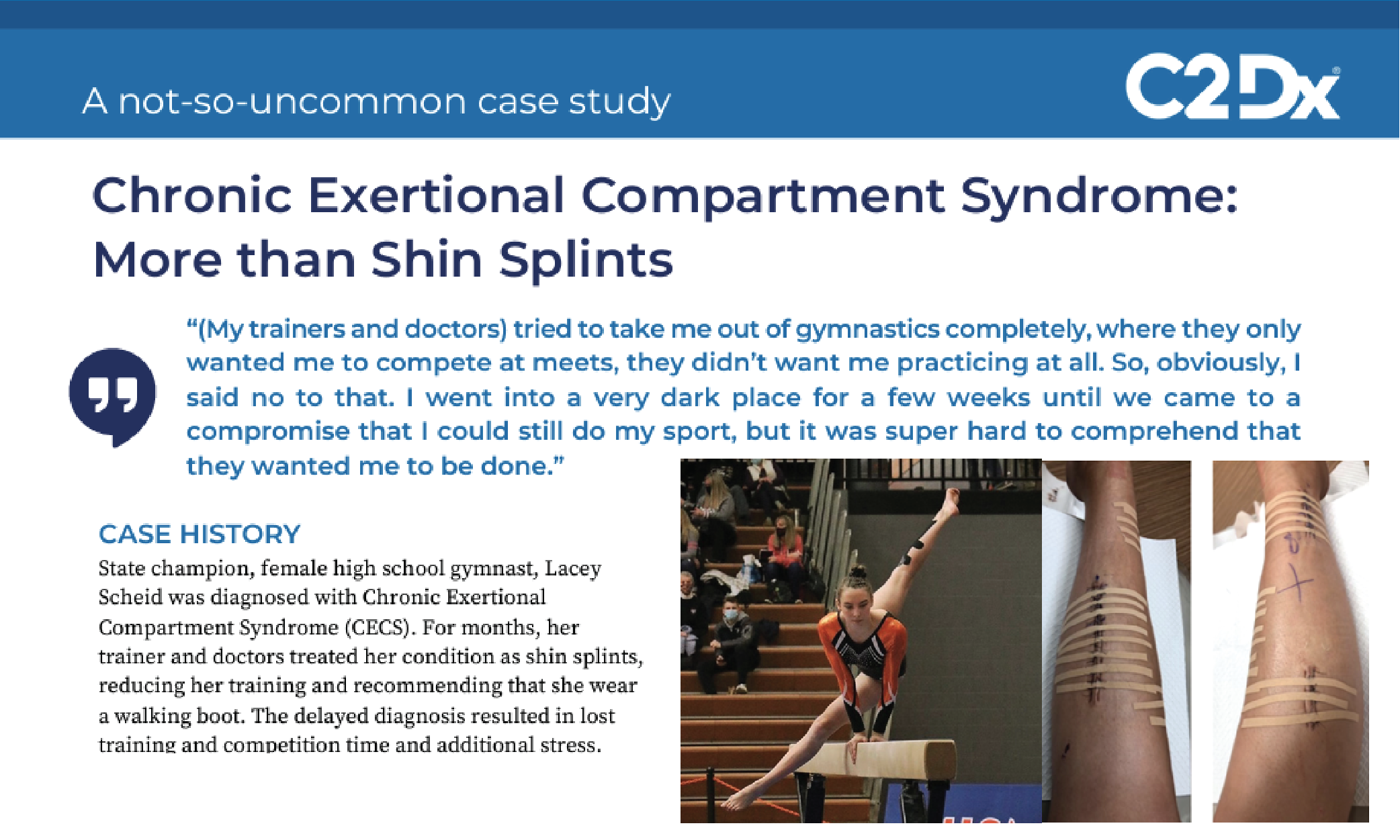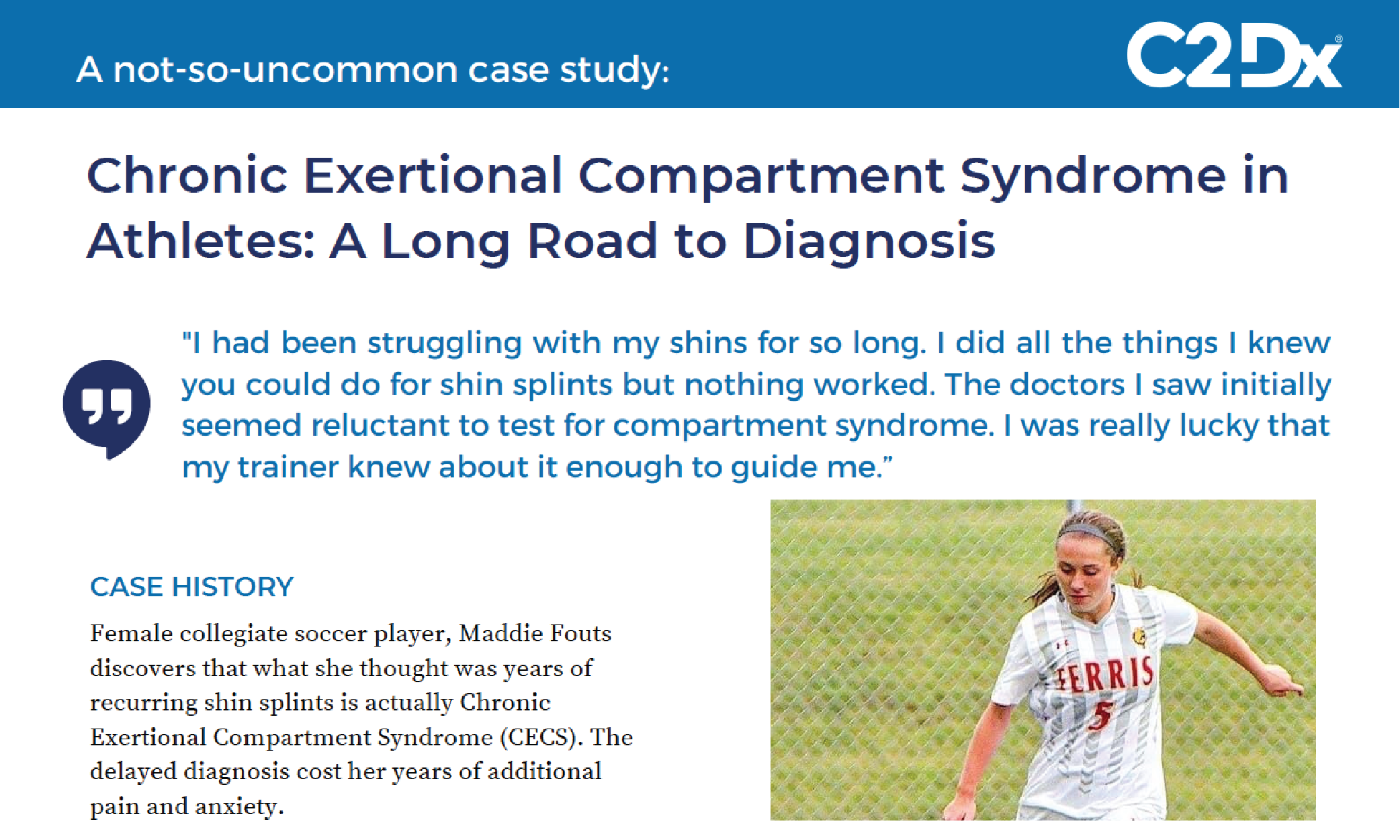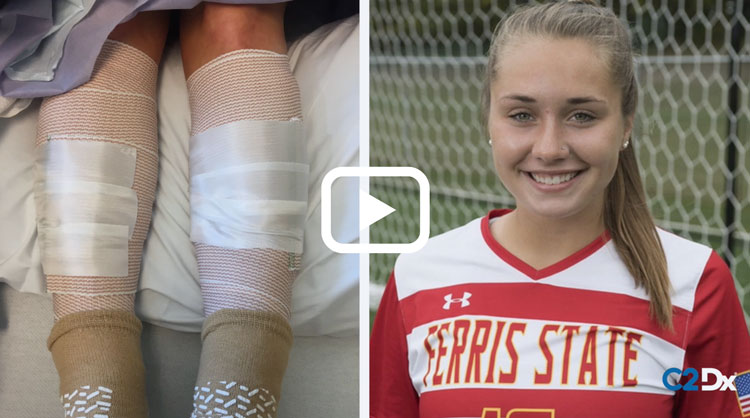Patient Stories

Case Study | Evan ACS C2Dx Case Study
March 4, 2024
Patient Profile | Evan ACS C2Dx Case Study Case History High school football player, Evan Kroeze was hit during the first scrimmage of his senior year. Kroeze went down on his back and someone’s knee hit his upper thigh. Initially, he thought it was a charley horse, but the final diagnosis was Acute Compartment Syndrome

Case Study | Evan ACS C2Dx Video Interview
December 27, 2023
Acute Compartment Syndrome: A Sideline Diagnosis Case History High School football player, Evan was diagnosed with Acute Compartment Syndrome (ACS) by his trainer on the sidelines after a tackle during the first scrimmage of his senior season. The quick diagnosis and emergency fasciotomy may have saved his leg and football career.

Case Study | Lacey CECS C2Dx Case Study
December 30, 2022
Chronic Exertional Compartment Syndrome: More than Shin Splints Case History State champion, female high school gymnast, Lacey Scheid was diagnosed with Chronic Exertional Compartment Syndrome (CECS). For months, her trainer and doctors treated her condition as shin splints, reducing her training and recommending that she wear a walking boot. The delayed diagnosis resulted in lost

Case Study | Maddie CECS C2Dx Case Study
December 30, 2022
Patient Profile | Maddie CECS C2Dx Case Study Case History Female collegiate soccer player, Maddie Fouts discovers that what she thought was years of recurring shin splints is actually Chronic Exertional Compartment Syndrome (CECS). The delayed diagnosis cost her years of additional pain and anxiety.

Patient Profile | Maddie CECS C2Dx Video Interview
August 8, 2022
Chronic Exertional Compartment Syndrome in Athletes: A Long Road to Diagnosis Case History Female collegiate soccer player, Maddie Fouts discovers that what she thought was years of recurring shin splints is actually Chronic Exertional Compartment Syndrome (CECS). The delayed diagnosis cost her years of additional pain and anxiety.

Patient Profile | Lacey CECS C2Dx Video Interview
August 8, 2022
Chronic Exertional Compartment Syndrome: More than Shin Splints Case History State champion, female high school gymnast, Lacey Scheid was diagnosed with Chronic Exertional Compartment Syndrome (CECS). For months, her trainer and doctors treated her condition as shin splints, reducing her training and recommending that she wear a walking boot. The delayed diagnosis resulted in lost

Diagnosing Compartment Syndrome
August 7, 2020
If the diagnosis is in question, it is imperative to obtain clinical compartment pressures. Prompt emergency department diagnosis by measuring compartment pressures, using a STIC pressure monitor, is essential to minimizing patient morbidity and disability in this life-threatening condition. Abstract Compartment syndrome can develop in numerous compartments throughout the body, although it is commonly found in compartments within the arms and legs. Generally, fractures are the cause of